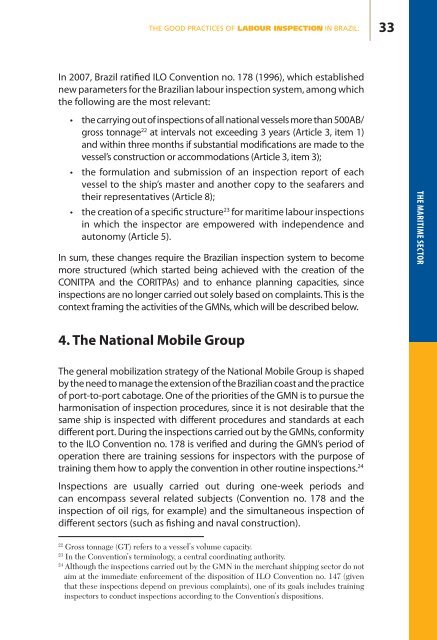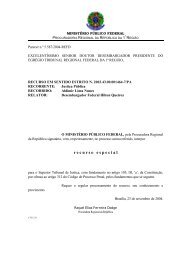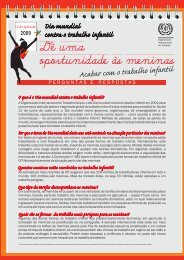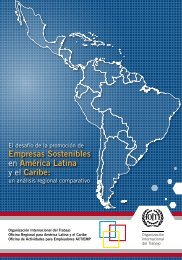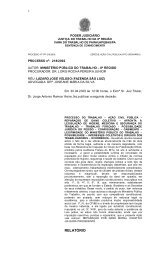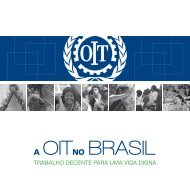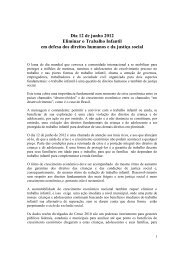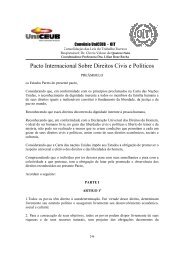The Maritime Sector
The Maritime Sector
The Maritime Sector
You also want an ePaper? Increase the reach of your titles
YUMPU automatically turns print PDFs into web optimized ePapers that Google loves.
THE GOOD PRACTICES OF LABOUR INSPECTION IN BRAZIL: 33In 2007, Brazil ratified ILO Convention no. 178 (1996), which establishednew parameters for the Brazilian labour inspection system, among whichthe following are the most relevant:• the carrying out of inspections of all national vessels more than 500AB/gross tonnage 22 at intervals not exceeding 3 years (Article 3, item 1)and within three months if substantial modifications are made to thevessel’s construction or accommodations (Article 3, item 3);• the formulation and submission of an inspection report of eachvessel to the ship’s master and another copy to the seafarers andtheir representatives (Article 8);• the creation of a specific structure 23 for maritime labour inspectionsin which the inspector are empowered with independence andautonomy (Article 5).In sum, these changes require the Brazilian inspection system to becomemore structured (which started being achieved with the creation of theCONITPA and the CORITPAs) and to enhance planning capacities, sinceinspections are no longer carried out solely based on complaints. This is thecontext framing the activities of the GMNs, which will be described below.THE MARITIME SECTOR4. <strong>The</strong> National Mobile Group<strong>The</strong> general mobilization strategy of the National Mobile Group is shapedby the need to manage the extension of the Brazilian coast and the practiceof port-to-port cabotage. One of the priorities of the GMN is to pursue theharmonisation of inspection procedures, since it is not desirable that thesame ship is inspected with different procedures and standards at eachdifferent port. During the inspections carried out by the GMNs, conformityto the ILO Convention no. 178 is verified and during the GMN’s period ofoperation there are training sessions for inspectors with the purpose oftraining them how to apply the convention in other routine inspections. 24Inspections are usually carried out during one-week periods andcan encompass several related subjects (Convention no. 178 and theinspection of oil rigs, for example) and the simultaneous inspection ofdifferent sectors (such as fishing and naval construction).22Gross tonnage (GT) refers to a vessel’s volume capacity.23In the Convention’s terminology, a central coordinating authority.24Although the inspections carried out by the GMN in the merchant shipping sector do notaim at the immediate enforcement of the disposition of ILO Convention no. 147 (giventhat these inspections depend on previous complaints), one of its goals includes traininginspectors to conduct inspections according to the Convention’s dispositions.


